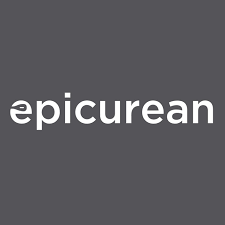So…you’re in the market for a new cutting board. Where do you start? Hardwood, edge-grain, end-grain, glass, marble, plastic—and what exactly is a paper composite board? With so many options, choosing can feel overwhelming for even a well-seasoned home cook. But ultimately, you don’t need to know the ins and outs of all the various styles and materials. The best board for you depends simply on how often you cook, how much space you have, your tolerance for maintenance, and what you like to look at.
In this entry-level look at cutting boards, Delish senior food director Robert Seixas and food editor Taylor Ann Spencer offer their expert advice on what matters most—with how well they do their job first and foremost, Taylor Ann emphasizes: “People go for looks only, without thinking about functionality. The most important thing is that the cutting board is easy to clean and kind to your knives.” Other things to consider: Maybe you want a large cutting board that covers your counter, like Epicurean’s Gourmet or All-in-One, or perhaps you prefer one that can stow away in a cabinet, like the Epicurean Kitchen Series. Keep reading to find which type of board might fit your needs best.
Will It Be Harsh On Your Knives?
A cutting board’s material has a huge effect on how often you’ll need to sharpen your tools of the trade. “I use my knives often, but I also like to care for them,” Taylor Ann says. “If I feel like a cutting board is being hard on the blade, it’s a no-go.” And while glass and marble boards might look pretty, they’ll dull and damage knives faster than that avocado you’re slicing will over-ripen. “Do not ever, ever buy or use a glass or marble board,” Rob agrees, adding that beyond the potential knife damage, they pose a safety hazard, because blades can easily slip on their hard surfaces. Instead, look for boards made of paper composite like those from Epicurean, which are composed of layers of knife-friendly kraft paper that are pressed and cured, plastic, or wood like maple and teak.
Will It Stand Up To Repeated Use?
Just as you want a material that treats your knives well, you also want a board that resists deep knife grooves and maintains its shape over time, especially if you cook frequently and rely on it for lots of chopping. “It’s important to me that it can stand up to daily use,” Taylor Ann says. Softer woods, like hinoki, may be gentle on knives, but they won’t hold up well against repeated heavy chopping. Plus, “you cannot use bread knives on them,” Rob points out. Epicurean’s paper composite, plastic, and hard wooden boards are all more durable options.
How Much Maintenance Are You Comfortable With?
If you opt for a wooden board, you’ll need to treat it with mineral oil every two weeks or so to keep it from cracking and splitting. If that’s not your style, nonporous materials like paper composite might be for you. Even better, these types can often go in the dishwasher, as all of Epicurean’s options can. “Dishwasher-safe boards are great,” Rob says, “especially after cutting raw meat on them”—since you can then sanitize them in the high heat.
Where Will You Keep It?
How much counter space do you have? Do you want your board to sit out all the time, or do you need to stow it away to make space for an air fryer’s footprint? In the latter case, you might prefer a lighter-weight board, as Taylor Ann does. “I like a cutting board that is lightweight but durable,” she says. “I have limited counter space, so my boards live in the lower cupboard when I’m not actively using them; if they’re too heavy, it’s a pain to haul them out.” This is why Epicurean’s Kitchen Series cutting board is her go-to for everyday uses. “I love how portable it is!” she says.
Is It Visually Appealing?
Speaking of which, while it’s by no means the most important factor, your cutting board’s aesthetic most certainly matters. For his part, Rob prefers light-colored boards—they’re “cheerier” and also make it easier to see the food he’s cutting clearly. Another functional aspect that contributes to the look? Juice grooves: If you frequently carve meat or cut fruit on the board, these little trenches can catch potential liquid overflow, keeping your workspace clean. Many home cooks also appreciate boards that transition seamlessly from prep surface to presentation piece. “When it comes to the Epicurean Chef Series,” Taylor Ann says, “I like that it looks elegant enough to double as a serving platter for a gathering’s buffet situation.”

